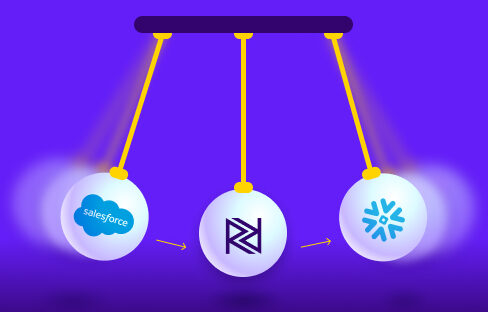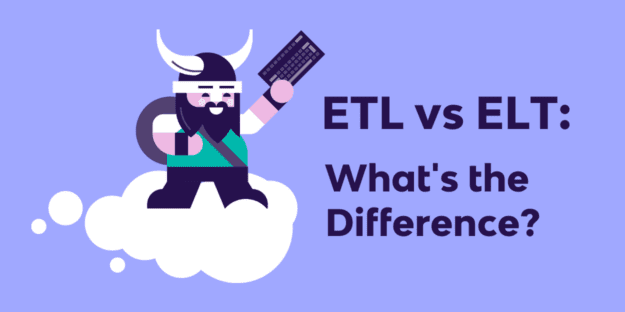As businesses increasingly recognize data’s indispensable role in shaping strategies, enhancing customer experiences, and driving innovation, the choice between centralized and decentralized approaches evolves from a mere technical decision to a strategic one.
Data teams are under intense pressure to maximize the business value of their data platforms. This new nuance is leading data teams to decide between two choices: Should they prioritize a centralized approach for better control and efficiency or embrace a decentralized approach for greater flexibility in their data platforms?
At the forefront of this decision is the distinction between governance and autonomy, which influences the strategic approach that drives the transformative power of data within the organization.
This article delves into the trade-offs between centralized and decentralized approaches and explores how a harmonized approach can unlock the full potential of data for accelerated business success.
The Centralized Stronghold: A Bastion of Modern Data Stacks
Centralized data platforms serve as the foundation for effective data governance and control, offering unified architectures and singular repositories. However, in today’s data landscape, this centralized approach has evolved to meet contemporary needs.
The modern data stack emphasizes agility, scalability, and interoperability by harnessing cloud-based data warehouses, native ingestion capabilities, and advanced data orchestration tools. By modernizing data infrastructure, organizations can seamlessly integrate various data sources, thereby adapting to changing data environments.
Adaptability Challenges in Centralized Platforms
Business requirements, especially in rapidly evolving landscapes, can strain the adaptability of centralized platforms. Scaling resources to meet new requirements, integrating emerging technologies, and swiftly deploying updates are essential for ensuring the platform remains a responsive catalyst for business innovation.
Achieving faster time to market for new data products, analytics, or applications is a common objective for data teams. However, the centralized development lifecycle introduces bottlenecks, particularly with coordination, testing, and deployment. Streamlining these processes becomes crucial for maintaining agility.
Despite these challenges, the modern data stack approach within centralized platforms introduces a more agile and responsive architecture than previous traditional ones. But as organizations navigate the centralized realm, integrating decentralized elements becomes pivotal to overcoming adaptability hurdles.
Decentralization: The Anomaly of Flexibility
Conversely, the rise of decentralized data platforms signals a shift towards flexibility and adaptability. By disseminating data management operations across controlled siloes, these platforms cater to organizations seeking to harmonize a medley of data sources and functionalities.
End users within decentralized platforms revel in the freedom of ad hoc data accessibility. Yet, the decentralization journey is not without hurdles; navigating the intricacies of coordination and ensuring consistency across distributed architecture requires a strategic approach and technology that supports the decentralized approach for a given organization’s needs.
To overcome these scalability challenges, organizations can leverage a harmonized approach that combines the governance strength of centralized models with the empowerment and adaptability of decentralized self-service capabilities.
This integration, guided by the principles of the modern data stack, offers a strategic path forward, allowing organizations to scale seamlessly to new use cases, accommodate more teams, and achieve faster time to market.
Harmonizing Governance and Data Execution: A Unified Framework
Recognizing the strengths of both paradigms, a harmonized approach emerges. Centralized governance provides the backbone, offering a structured framework for policies, access control, and compliance. This unified governance model ensures consistency, data quality, and security across the organization and allows the data team to become a center of excellence, focusing on setting standards, best practices, and enablement of domain teams.
Within this centralized governance framework, data product teams operate in controlled areas from end-to-end of the data management process, covering capabilities such as data ingestion, transformation, orchestration, and activation. Domain experts assume control over their specific data needs and use cases, adapting policies to local requirements. This allows for the utmost agility while still conforming to organization-wide governance standards.
The Importance of Self-Serve
In the pursuit of centralized governance, a paradox emerges—the potential for data teams to become bottlenecks or service desks. In this scenario, end users face limited autonomy, waiting in line for analysis requests, and communication bottlenecks arise as data teams act as intermediaries between domain experts and raw data.
End users in a highly centralized setup often have limited autonomy in accessing and analyzing data, depending on centralized data teams even for routine queries. This dependency can lead to bottlenecks as the number of data requests accumulates.
Centralized data teams find themselves responding to a barrage of user requests, transforming into a ‘service desk’ for all things data. This dynamic reduces the efficiency of data teams, hindering their ability to focus on strategic initiatives and creating scalability challenges across the org. In acting as intermediaries, data teams inadvertently introduce communication bottlenecks as well. Nuances and context are lost in translation, and the constant influx of user requests shifts the focus of data teams towards reactive tasks, diverting attention from strategic initiatives with a bigger impact on the business.
The paradox of data teams becoming bottlenecks or service desks in a centralized approach underscores the critical importance of self-service capabilities. Empowering end users with self-service tools reduces dependency, accelerates time-to-insight, and fosters collaboration between domain experts and data teams.
Empowering End Users:
Self-service tools empower end users to perform routine analyses and obtain insights without constant reliance on centralized data teams. This reduction in dependency enhances the agility of data-driven decision-making.
Fostering Collaboration between Data and the Business:
Self-service capabilities foster cross-functional collaboration by enabling domain experts to directly engage with data. This collaboration promotes a shared responsibility for data analysis and a deeper understanding of business challenges and opportunities.
Strategic Focus for Data Teams:
Liberated from service desk dynamics, data teams can shift their priorities toward strategic initiatives. This includes improving data quality on core data pipelines, implementing advanced analytics, and exploring innovative solutions that drive business value.
The Convergence: Centralized Governance with Decentralized Self-Serve in the Data Platform
Organizations are gravitating towards a harmonized data platform, recognizing the benefits of centralized control and decentralized flexibility. By combining the robust governance of centralized models with the empowerment of decentralized self-service capabilities, businesses can achieve a delicate balance that fosters innovation and responsiveness.
Putting Ownership in the Hands of Domain Experts:
One of the key advantages of this integrated approach is the ability to empower domain experts. By putting ownership of data in the hands of those intimately familiar with the nuances of their respective domains, organizations can accelerate the time to business value. Domain experts can swiftly translate data into actionable insights without needing constant intervention from central data authorities.
Emphasizing Time to Business Value:
Time is of the essence in today’s fast-paced business landscape. A harmonized data platform enables organizations to cut through bureaucratic bottlenecks, allowing domain experts to extract valuable insights promptly. By reducing the dependency on centralized data teams for every analysis, businesses can respond more swiftly to emerging trends and make data-driven decisions in real-time.
At Rivery, we’ve crafted a platform that strikes a balance between simplicity and flexibility. Our goal is to empower users, giving them the ability to dive deep into their data pipelines while maintaining control when needed. Central to this effort was the creation of a platform that is not closed but open, allowing seamless integration into existing architectures while preserving a unified experience, especially for DataOps, to facilitate easier data delivery.
A fundamental principle guiding us at Rivery is the integration of core elements like data ingestion, transformation, and orchestration within our platform, while also enabling seamless integration with external tools and processes.
Furthermore, Rivery isn’t just for centralized data teams. Individual members across different teams can also leverage our platform to self-serve and construct their pipelines. We’ve engineered Rivery to operate at scale, providing full transparency and governance under the oversight of data platform teams. This means that governance can extend across various environments, facilitated by role-based access control (RBAC), allowing controlled silos for self-service pipeline development, deployment, and maintenance.
Moving Forward
The choice between centralized and decentralized data platforms need not be a stark either-or proposition. It is a sliding scale, and organizations can derive value by harmonizing the strengths of both paradigms. A unified approach, blending centralized governance with decentralized self-service empowerment, offers a promising path forward.
Placing ownership in the hands of domain experts becomes a catalyst for accelerating the time to business value. Careful consideration of trade-offs and a strategic implementation plan can pave the way for a future where data agility, responsiveness, and empowerment converge for organizational success.
Minimize the firefighting. Maximize ROI on pipelines.





